I purposely aimed this post at beginner and even intermediate level guitarists that are somewhat new to the world of guitar pedals. I want to help you to make informed choices, and get the best tone possible for both your bedroom and stage setups.
If you’re new to the world of guitar and pedal effects, you might reasonably assume that you should be able to walk into any big name music instrument store and find a salesperson that is knowledgeable and can help navigate you through the myriad of overdrive pedals on display. Sadly you better think again!
Most sales people these days are between the ages of 18 and 25 and they lack the product knowledge and or the desire to be helpful to newbies, or really anyone for that matter. If you think I am been too harsh, try asking them a question about whether this soft clipping overdrive will get you a certain kind of sound (like your favourite guitar heroes use). You’re likely to receive the patented response, “Um yeah, it should do.” Not exactly helpful stuff.
That’s not to say that there aren’t supremely knowledgeable music people working behind the counters, but the odds that you’re going to walk into a store and find one of these rare diamonds are diminishing every day. So, it makes sense to educate yourself, know what you’re looking at and how things work and make smarter buying decisions.
First, let’s talk about your guitar amp. You’re going to need some kind of guitar amp to run your pedals through.
Guitar amps generally fall into four basic categories.
- Valve amps
- Solid state amps
- Digital modeling amps, e.g. Kemper, Axe FX, Helix, etc.
- Virtual amps, i.e. software applications, or often generally referred to as “plugins”. These are ideal if you are going to be doing a lot of recording via a computer Digital Audio Workstation (DAW).
This article is aimed primarily at valve amp owners. Valve amps will produce the best effects with an overdrive pedal. If you have a solid state amp or another type from the list above, that’s okay. Just know that the overdrive pedal will respond slightly differently to your amp and vice versa.
What is an overdrive? How and why do we use it?
If you’re a guitarist that’s looking to play blues, rock, metal, grunge or punk music, an overdrive pedal should be at the top of your list. An overdrive pedal lets you take a beautiful clean guitar sound generated from a valve amp and beef it up at the touch of a foot switch into a warm over driven saturated rock’n’roll beast. Overdriven tone is the foundation of achieving a good rock sound.
Generally speaking we can group overdrive and distortion and fuzz effects into a “Drive pedal group”:
- A. Overdrive
- B. Distortion
- C. Fuzz
They are all designed to drive the amp to various degrees of clipping and produce various levels of distorted sound, but overdrive pedals tend to produce the most conservative effects in the drive family.
Stay tuned for upcoming posts that will help you to understand some of the different effects and their purposes in the drive family of pedals.
Why do guitarists choose to buy an overdrive pedal to put in front of their amp?
The number one reason guitarists purchase an overdrive pedal is usually to achieve a more overdriven or saturated sound that the amp is not capable of producing while operating at lower volume levels. Valve amps require a large amount of volume to be able to clip the signal and produce a warm saturated overdriven sound. In this kind of scenario the guitar amp master volume would need to be set at about 7 to 8. This is fine if you are playing in a large open area, but in a confined space this kind of volume level is both hard on your ears and your neighbours’ patience!
This is where it’s handy to have an overdrive pedal that you can place in the front of your signal chain before your signal output enters your amp. Then we can use our overdrive pedal to clip the amp and achieve the desired additional signal or gain at much more reasonable volumes on the master volume on the amp.
This post is going to be an amazing resource for you to learn what overdrive is and the different types of overdrive pedals you can use to sculpt your sound.
What is the overdrive effect and how do we use it?
Overdrive is the most subtle of the distortion types. The overdrive pedal circuit is designed to emulate a tube or valve amp that is being pushed past the point of its clean headroom.
Imagine hitting a note on guitar and it’s plugged into your amp. If the note is sounding clean, i.e. non-distorted, we are well within the natural headroom of the amp and the signal behaves accordingly. As we turn up the channel and master volume, we begin to generate a signal that begins to move past the comfortable headroom of the amp. We only have so much headroom before the valves begin to react to the additional volume and produce first an overdriven sound which rapidly turns into more full on distortion.
During this process, sound begins to get more compressed which creates either overdriven breakup, or aggressive distortion. These are the sounds commonly associated with rock music.
Types of overdrive pedals
A soft clipping pedal has diodes within the loop of the pedals circuit to make sure that the circuit doesn’t fully distort or “hard clip” the signal. This is the most used and most familiar category of overdrive effects out there, and has been around since the late 70s.
An example of a soft clipping overdrive is the tube screamer used by artists like Stevie Ray Vaughan. Nerdy note: In 1979, Ibanez released the most famous overdrive pedal of all time – the Tube Screamer TS808.
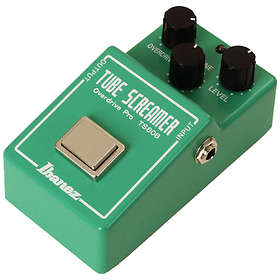
Want to pick up one of these for yourself? Get it delivered to your door from Amazon.
Soft clipping overdrive pedals tend to produce the most conservative effects in the drive family.
The term soft clipping overdrive can be used to describe Ibanez tube screamers the Boss Super Overdrive, Boss Blues Overdrive BD2, and others like them. These are all soft clipping tube screamer style overdrives and the distinctive factor in the tube screamer style is that it’s not transparent. It actually adds and boosts the mid frequencies, causing your guitar to easily punch through the mix, adding additional thickness to the sound, which is especially handy if you’re using single coil pickups and wanting a fatter sound. It makes things feel and sound thicker than they normally would.
Most guitarists have more than one of these. I have a number of soft clipping overdrive pedals that I regularly change out on my pedal board.
I favour the following (I’ve linked to a page to buy each of these from if you’d like to check them out):
- Ibanez Tube Screamer TS9 (TS10 is favoured by John Maher, but they’re extremely hard to get now because of this)
- BOSS SD1 Overdrive (very popular during the eighties and 90’s)
- BOSS Blues Driver BD-2W
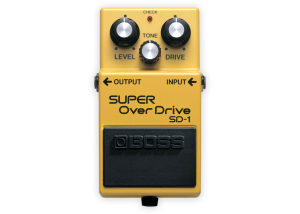
Please note that there are literally hundreds (if not thousands) of soft clipping overdrive pedals to choose from. Regardless of your budget, there is a suitable overdrive pedal option for every guitarist.
The second category of soft clipping overdrive is different from the tube tube screamer and here’s why.
The Blues Breaker pedal is a different kind of soft clipping overdrive which came about in the 1990’s when Marshall made the Bluesbreaker pedal based around the tonal characteristics of a particular classic Marshall amplifier. There is one major difference between an Ibanez tube screamer and a Marshall Blues Breaker pedal.
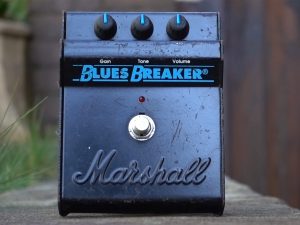
The difference is Transparency. The Blues Breaker pedal is largely transparent, meaning that the pedal helps you to hear the sound of your guitar and amp hitting various stages of overdriven sound without adding additional bumps (increases) in frequencies from the pedal. Whereas the tube screamer is purposefully designed to produce a mid-frequency bump that’s not transparent.
Eric Clapton would often favour a Bluesbreaker type pedal and Stevie Ray Vaughan would prefer his tube screamer.
Marshall have recently reissued their classic pedals and you can now pick up one of these for yourself here (when it’s in stock). They have also released a second version which is a bit more aggressive.
Hard clipping (overdrive and distortion)
The next category of overdrive I want to introduce you to is called hard clipping. Unlike the Tube Screamer and Blues Breaker, which are soft clipping, hard clipping overdrive and distortion effects actually put the diodes at the end of the circuit. This means that every bit of your guitar signal is clipped in some way. Hard-clipped overdrives can be described as not being as smooth and definitely produce a more aggressive sound. Distortion pedals are great for rock and metal.
🤓 Nerdy info: A diode is a semiconductor device that essentially acts as a one-way switch for current. It allows current to flow easily in one direction, but severely restricts current from flowing in the opposite. The diodes in overdrive pedals are what produce the clipping effect. Different pedals run different combinations of diodes to produce different overdrive and distortion effects.
The first examples of hard clipping pedals were designed in the early 70’s. These pedals created a new style of sonic overdrive/distortion and allowed players to take previously clean amps to new overdriven and distorted highs. Hard clipping pedals actually preceded soft clipping overdrive designs, for example the DOD Overdrive Preamp 250 and the MXR M-104 Distortion.
My personal favourite from this group, and a staple of my pedal board, is the Fulltone OCD.
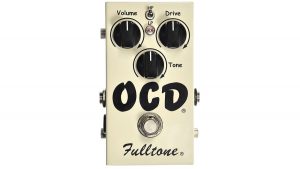
🤓 Nerdy info: The maker of this pedal has recently closed down manufacturing, claiming that it’s getting harder to produce boutique pedals in the states due to cost. The good news though is that they’re planning to relaunch the product in partnership with a company called Jackson Audio! I’ll update this post with a link to purchase the new version once it has released.
The next kind of hard clipping pedal deserves a paragraph on its virtues and unique quirks and qualities.
There are many different styles of hard clipping pedals that cross the line between overdrive and distortion. There is one particular pedal that gets tone chasers frothing at the mouth. I’m referring to the Klon Centaur.
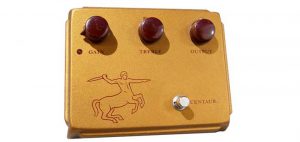
Blues guys like John Maher love this pedal! The Klon movement started in the mid-nineties. It’s a hard clipping pedal with interesting design quirks, and some people get confused, describing the Klon as being like a Bluesbreaker or maybe a Tube Screamer. They are way off base!
The Klon design is a quirky, unique circuit. It does some interesting stuff, and sonically it was hard to beat for a long time. The circuit design is definitely strange compared to other hard clipping pedals because there are actually two potentiometers turning at the same time. Because of the way that it blends in the gain signal, you almost always have your clean signal going at the same time as your affected signal.
Don’t expect to go and buy an original Klon at your local music store. These pedals go for big money.
There’s also some myths associated with the 90’s Klon pedal i.e. you’re paying big money for magical diodes that people say they can hear cutting in at low volume. This is false. According to pedal builders in the know, “If you don’t run the gain knob on a Klon in the top 60% and up, you’re not going to hear the diodes at all!”
The good news is that if you can’t afford upwards of $100K for an original 90’s Klon (one is currently on Ebay for 500k USD!), then you can buy the next best thing in my opinion which is the Tumnus Wampler pedal (or it’s sibling, the Tumnus Wampler Deluxe). Another great alternative is the Archer by Rocket (which also has a fancier sibling with more features).
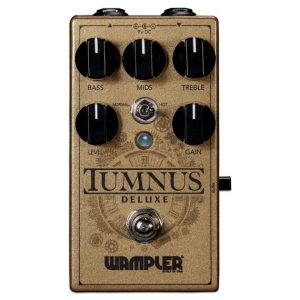
There are many other Klon clones out there, but the Tumnus Wampler seems to be the winner of so many head to head direct comparison shootouts on YouTube and social media.
Transistor-Based Overdrives Without An Op-Amp
The second to last category I want to cover is transistor-based overdrives without an op-amp. In my opinion, these guys are the unsung heroes of overdrives. They’re not talked about enough, and a lot of people haven’t tried them out. Look ’em up on YouTube and try one out if you can find them locally.
So, basically, this type of pedal doesn’t have a soft clipping section within an op-amp like a Tube Screamer or a Blues Breaker, and they don’t have hard clipping like these overdrives/distortions we looked at. They’re made up of transistors in stages. They operate like multiple boost pedals, all hitting each other, very much like how a tube amp works.
When you turn it up, things are saturating and hitting other things. This format was also used in the earliest design of fuzz pedals. The examples I have listed below are 100% in the overdrive category and sound really cool. They are very touch responsive, meaning when you pick lightly, you will get a clean sound. If you pick heavy, you will get a dirty sound. This is very much mimicking the behaviour of how a valve amp responds to light or heavy picking.
The BOSS BD-2 Blues Driver is one of my favourites because it’s really simple to operate and it seems to sound good with guitars that either have single coil, or humbucker pickups.
You can also currently pick up the BD-2W, which is a Waza Craft version of this iconic pedal. Waza Craft pedals are the high-end, premium offerings of the BOSS compact line. This treatment is an honor reserved for iconic pedals in the BOSS echelon.
Other transistor-based overdrives that don’t have an op-amp include the Joyo Blue Rain and the TC Electronic Cinders (similar to a BD-2 but with a true bypass).
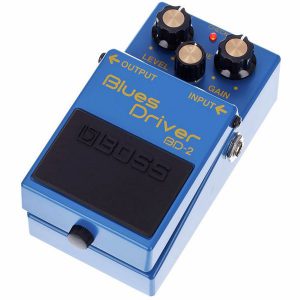
Amps In a Box
The last category to cover is amps in a box. They are pretty much exactly as the name suggests – amps inside a box.
An amp in a box typically uses transistors in cascading stages, just like an amp. They are tube emulators that sound very close to the popular valve amps with the big price tags. For example, Wampler makes a Plexi Drive that sounds a lot like a Marshall. With a much smaller price tag and footprint, for both the stage and the bedroom or lounge player.
One of my favourites from this category is the BE-OD Deluxe. Here’s a quick list of other worthwhile contenders:
- Tech 21 SansAmp GT2 Tube Amp Emulator Pedal
- MXR EVH 5150 Overdrive Pedal (includes the “brown sound”, made famous by the earlier Eddie Van Halen records)
- Diezel VH4-2 Pedal 2-channel Overdrive and Preamp
- Catalinbread RAH (which has effectively replaced the Catalinbread WIIO)
- Electro-Harmonix EHX Tortion
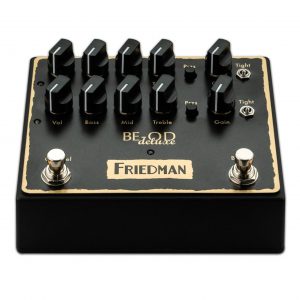
If you are new to overdrive pedals and want to get some expert advice on how to dial in a great tone, you’re welcome to book an online or face to face session with me and we can work together to reduce the time it takes to be in tone heaven.
Disclaimer: The provided links to each pedal are Amazon Associate links, which support the site at no additional cost to you should you choose to purchase one. In keeping with my “No BS” policy, I will never recommend any product that I wouldn’t personally use.

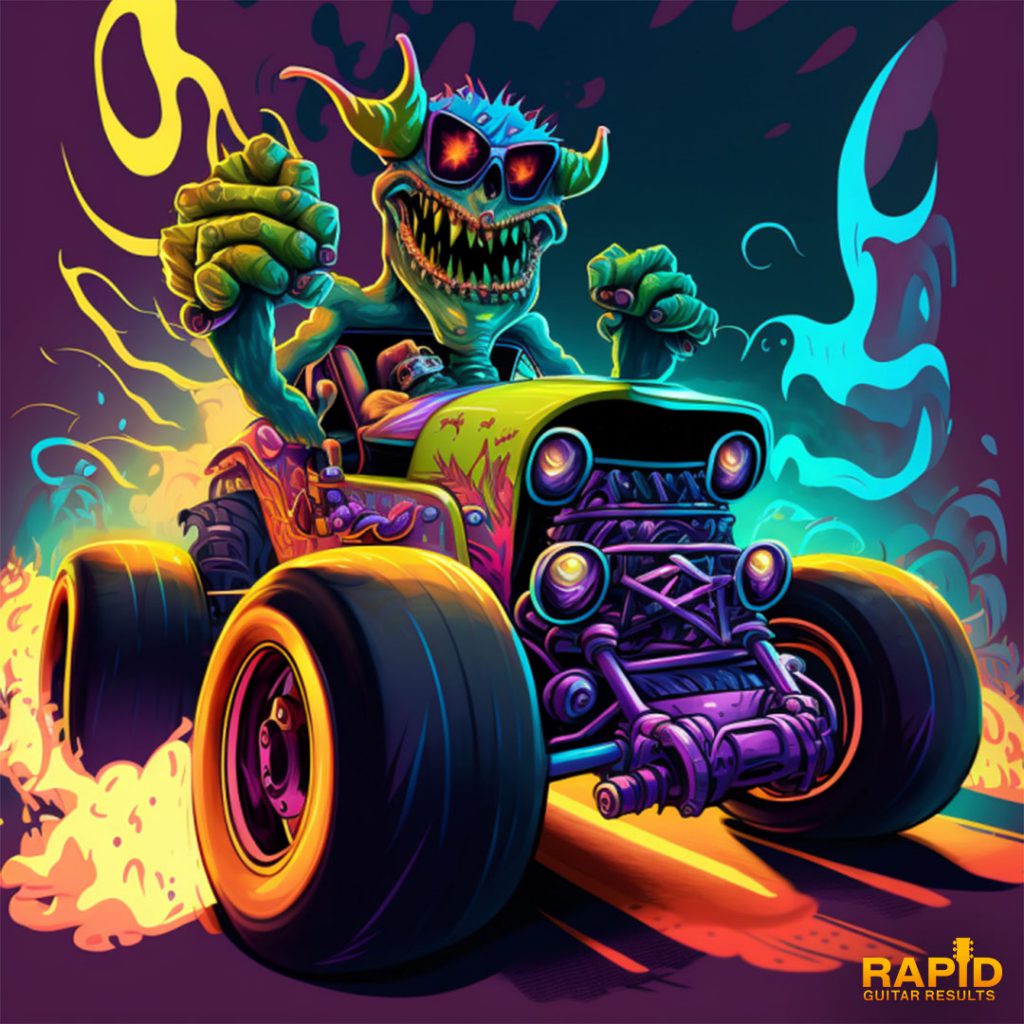
The OCD was my first overdrive. For a long time I tried to find a better OD but always came back to Fulltone. For my money you can’t beat a Tele bridge pickup into OCD into a Vox. Just one man’s opinion.
Stay cool and remember, Mars needs guitars
Yes, I’m a fan of Fulltone pedals too! I have an OCD and it seems like the world of overdrive pedals only ever continues to grow so there’s always something new and exciting to grab and plug into your pedal board. Your guitar and pedal setup sounds like a match made in guitar heaven!
-Paule
Great article with many vivid details! Curious about your thoughts for overdrive, with a humbucker guitar not single coil. I’d been thinking about Tumnus, BD-2, and Marshall Bluesbreaker and was interested to see you lay out the differences under the hood.
Hi Michael, great questions!
Certainly worthy of a future blog post. Initial thoughts are that the Tumnus, the BD-2 and the Marshall Bluesbreaker are all great pedals for use with humbucker pickups. I should know – I have all three! 🙂
I find that with overdrive pedals, it’s great to have an assortment of overdrives. They all provide a slightly different colour to your sound and with a little bit of experimentation, you’ll certainly settle on a favourite. If I were to rate them, I’d say that the Tumnus and the Marshall Bluesbreaker are my absolute favourites.
With the Bluesbreaker pedal, I purchased the reissue set of four and the Bluesbreaker is a hard one to beat. The Tumnus will stand on its own as a great pedal. I tend to use my BD-2 as a volume boost pedal. Stay tuned for a future post, and thanks for the great idea!
For some great ideas, I can recommend checking out “That Pedal Show” on YouTube.